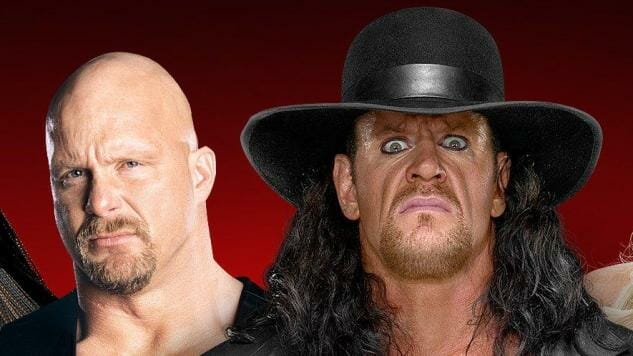WWE’s Raw 25 Celebrates the 25th Anniversary of the Show That Ended Wrestling as We Knew It
Images courtesy of WWE.com
Tonight WWE celebrates the 25th anniversary of Raw, its flagship TV show. It’s the program that spurred WWE on to its highest peak of pop culture relevance, and whose TV rights fees drive the company’s current financial success. It redefined not just the direction of WWE but the entire wrestling industry. And in the process it basically killed wrestling as it was known in the 20th century, leading to the stagnant, corporate product that we know today.
When Monday Night Raw premiered 25 years and 11 days ago on the USA Network, pro wrestling was about to bottom out. Vince McMahon’s World Wrestling Federation was a few years removed from the peak of Hulkamania, and the attempt to replace Hulk Hogan with the Ultimate Warrior had clearly failed. Meanwhile, in Atlanta, World Championship Wrestling was struggling to establish itself outside of its traditional Southern base—by the end of 1993 the Ted Turner-owned company would name its fifth lead executive since the beginning of 1992. Ratings and interest were down across the board for the two major companies, and new top stars like Bret Hart, Sting and Vader, while popular, largely failed to draw as strongly as the biggest names of the 1980s, many of whom were still active.
Before this downturn reached its nadir, WWF radically changed its approach to television. Its long-running prime time slot on USA was never the promotion’s flagship TV show—that was reserved for the syndicated WWF Superstars of Wrestling, which used angles, promos, squash matches and the occasional competitive match to build up the storylines that would play out at house shows for months on end, and occasionally culminate at one of the company’s quarterly pay-per-views.
That changed with the debut of Raw on Jan. 11, 1993. Instead of a taped show from an anonymous arena, it was broadcast live from the relatively small Manhattan Center theater in New York, which was packed with an enthusiastic crowd. Instead of a series of two minute matches with no-name enhancement talent losing to stars, Raw had… a series of three minute matches with recognizable enhancement talent losing to stars, like Koko B. Ware falling to Yokozuna, and Damien Demento getting pinned by the Undertaker in the main event. In the most competitive match on the show, Intercontinental Champion Shawn Michaels defeated the short-lived future cyborg character Max Moon (here played by Paul Diamond and not the role’s originator, Mexican superstar and future NWO member Konnan) in a ten minute title defense. Add in a few comedy segments starring Bobby Heenan, a handful of interviews, and some putrid commentary from comedian Rob Bartlett (who disappeared from Raw and wrestling after only a few months), and you had a show that felt nothing like anything WWF had ever televised before.
Raw was immediately WWF’s primary show, but it didn’t stop the company’s mid-’90s slide. Audiences grew smaller even as newer stars like Diesel and Razor Ramon became main eventers. In 1994 WCW dropped the wrestling industry equivalent of a nuclear bomb by signing Hulk Hogan and immediately remaking the company in his candy-colored, kid-friendly image. WWF and Raw plugged along for another year with no prime time competition, but had to resort to taping shows at small arenas in cities like Binghamton, New York, and Macon, Georgia. For most of June, 1995, WWF’s flagship show was held at a high school gym in Ohio. Despite Raw’s improvement on WWF’s TV product, after the show’s first two years on the air the company was at its lowest point since McMahon took over from his father in the early ‘80s.
-

-

-

-

-

-

-

-

-

-

-

-

-

-

-

-

-

-

-

-

-

-

-

-

-

-

-

-

-

-

-

-

-

-

-

-

-

-

-

-








































